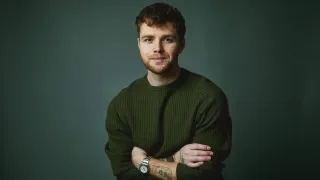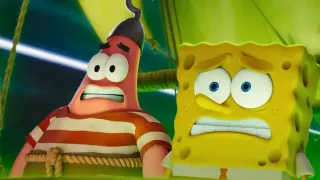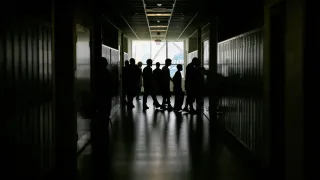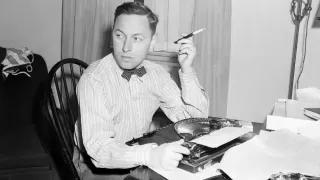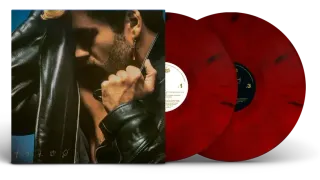February 4, 2021
Prayer Breakfast Gives Biden Fresh Chance to Call for Unity
Elana Schor and Will Weissert READ TIME: 4 MIN.
President Joe Biden is expected to address the National Prayer Breakfast, a Washington tradition that calls on political combatants to set aside their differences for one morning.
The breakfast, set for Thursday, has sparked controversy in the past, particularly when President Donald Trump used last year's installment to slam his political opponents and question their faith. Some liberals have viewed the event warily because of the conservative faith-based group that is behind it.
Still, Biden campaigned for the White House as someone who could unify Americans, and the breakfast will give the nation's second Catholic president a chance to talk about his vision of faith. Sen. Chris Coons, D-Del., said the event will be "an inclusive and positive event" that "recognizes the teachings of Jesus but is not limited to Christianity."
Coons also told reporters that Biden's remarks would take a different tack than those of Trump.
"There have been significant changes in tone and focus from President Obama to President Trump to what I hope and expect will be a different tone and focus under President Biden," said Coons, an honorary co-chair of this year's gathering.
Every president has attended the breakfast since Dwight D. Eisenhower made his first appearance in 1953. The event is set to be virtual this year because of the coronavirus pandemic. Coons suggested that Biden would appear via taped remarks.
The breakfast is moving forward at a time when the nation's capital is facing a series of historic crises. Biden is struggling to win significant support from congressional Republicans for a coronavirus response package, raising the likelihood that he will rely only on Democrats to pass the legislation.
Many in Washington are still navigating the aftermath of the deadly insurrection at the U.S. Capitol last month. Trump faces an unprecedented second impeachment trial in the Senate next week over his role in inciting the riot.
Biden's message on Thursday is likely to represent his latest call to return Washington to more traditional footing after four years of Trump's aggressive style. During the 2020 breakfast, Trump singled out Democratic House Speaker Nancy Pelosi and Republican Sen. Mitt Romney of Utah, who had voted to convict the president during the first impeachment trial. Trump even held up a newspaper with a headline reading "ACQUITTED" over his own picture.
South Carolina Sen. Tim Scott, a GOP co-chair of this year's breakfast, said he hopes to see Biden emphasize the nation's status as "a place for diversity and tolerance" that at the same time allows for respectful disagreement.
Scott, like Coons, pointed to regular faith-based gatherings that draw senators from both ends of the ideological spectrum as a model. "We don't see eye to eye philosophically, politically, but we do embrace each other as brothers of faith," Scott, who is also expected to offer virtual remarks at the breakfast, said in an interview.
The breakfast has drawn pushback from gay and civil rights activists since President Barack Obama's administration, with much of the opposition focused on the Fellowship Foundation, the conservative faith-based organization that has long supported the event. Religious liberals mounted a protest outside Trump's first appearance in 2017, criticizing his limits on refugee admissions to the U.S., and a Russian gun rights activist convicted of acting as an unregistered foreign agent attended the breakfast twice during his administration.
Norman Solomon, co-founder and national director of the progressive activist group RootsAction, warned Biden not to "reach across any aisle to bigotry."
"We don't need any unity with bigotry," Solomon said. "I fear a subtext of this engagement is, 'Can't we all get along.' But that's not appropriate in this case given the well-known right-wing and anti-gay background of the event's sponsors."
Solomon said Democratic presidents have continued a tradition of attending an event where their Republican counterparts often felt more comfortable because they feared being labeled as "anti-religious or nonreligious." He said that Biden, a devout Catholic who attends Mass every week, could better send a unifying message by skipping the event and instead attending one that is truly bipartisan.
"God knows there are many religious leaders and gatherings that are devout and affirm human equality," he said. "This isn't one of them."
Rachel Laser, president and CEO of Americans United for Separation of Church and State, agreed that "there are far better ways" than the breakfast for Biden to connect with people on the basis of shared spiritual beliefs.
"We would love to work with the administration to figure out a way to change the sponsorship of an event like this and to make it a place for Americans of all different religious beliefs," Laser said.
Yet Democratic leaders, aware of Biden's devout Catholic faith and calls for healing, have largely refrained from public comment on the event this year. Florida Rep. Val Demings, once on the short list to be Biden's running mate, has delivered the closing prayer at the event in the past and is one of several Democratic members of Congress planning to attend.
Both Laser and Guthrie Graves-Fitzsimmons, a fellow in the faith initiative at the liberal Center for American Progress think tank, pointed to the Christian symbolism seen during last month's Capitol riot as an opening for Biden to offer pluralistic, open language about faith.
"I hope President Biden recognizes we're in a new moment," Graves-Fitzsimmons said, "and that the Christian nationalism threat is a threat to both the sacred religious pluralism of the U.S. and to Christianity."
___
Associated Press religion coverage receives support from the Lilly Endowment through The Conversation U.S. The AP is solely responsible for this content.
